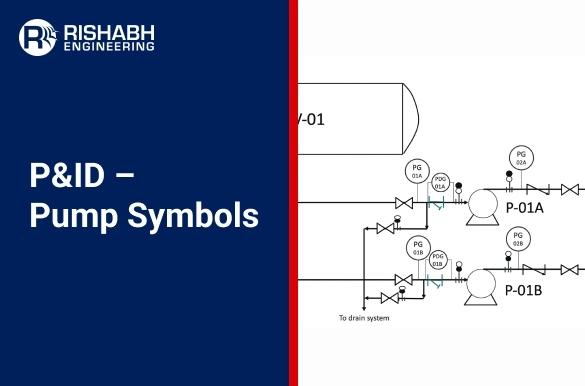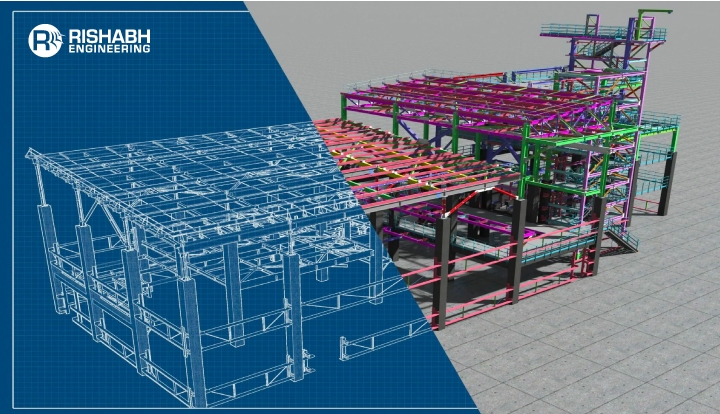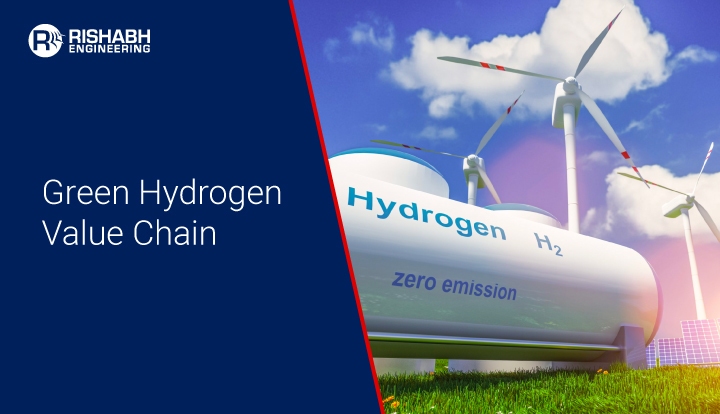
P&ID Symbols For Pumps: Process Engineers’ Guide
In the realm of process engineering, Piping and Instrumentation Diagrams (P&IDs) are crucial tools for visualizing and conveying the design, configuration, and operation of systems. P&ID pump symbols, specifically, are an essential part of these diagrams. They serve as visual shorthand, simplifying the complexity of fluid handling systems, pumps, and associated piping.
This blog takes a deep dive into P&ID pump symbols — what they are, how they are used, why they are important, how to read and interpret them along with guidelines and best practices for creation. For engineers, designers, and operators alike, understanding pump symbols is critical to both interpreting and developing process designs that are safe, functional, and compliant with industry standards.

What are P&ID Symbols For Pumps?
These symbols represent pumps in a process system. They help visually communicate the type of pump, its operating mode, and its functional attributes. These symbols help engineers, operators, and maintenance personnel easily identify and understand the pumping system’s design and operation. Each symbol is standardized and corresponds to a specific type of pump, ensuring clarity across designs and teams.
Types of P&ID Pump Symbols
- Centrifugal Pump: The most common type of pump used in industrial systems. It is typically represented by a circle with an arrow inside, pointing in the direction of flow. The arrow indicates the direction in which the pump impels the fluid.
- Positive Displacement Pump: These pumps are used for applications requiring constant flow rates, regardless of system pressure. They are typically represented by a circle or rectangle with a slanted line or a dotted line inside, indicating the displacement action.
- Gear Pump: A type of positive displacement pump, often used for high-pressure, low-flow applications. It is represented by a small rectangle or circle with two interlocking gears inside.
- Diaphragm Pump: Another form of positive displacement pump, diaphragm pumps are used for handling viscous fluids. The symbol is usually shown as a circle with a diaphragm-shaped line inside.
- Peristaltic Pump: Peristaltic pumps are used in applications requiring precise flow control, often for chemicals or medical fluids. They are represented by a series of curved arrows around a circle, signifying the squeezing action.
- Screw Pump: Typically used in high-viscosity fluid applications, screw pumps are represented by an ‘S’ or spiral within a circle to signify the screw mechanism used to move fluids.
Components of Pump P&ID Symbols
Listed below are the broad categories of pump symbols in P&IDs that define the pump’s function and usage details:
- Pump Type: Indicated by the specific symbol (centrifugal, diaphragm, gear, etc.).
- Flow Direction: Arrows show the direction in which the fluid flows.
- Control Features: Some symbols will indicate specific control features, such as variable speed or automatic shutdown capabilities.
- Drive Information: Some symbols include supplementary annotations or text to describe operational details, such as the motor, turbines type or drive configuration.
P&ID – Pump Symbols
They represent the different types of pumps used in process systems and help simplify complex fluid handling operations. Each symbol visually communicates the pump’s type, function, and orientation, ensuring consistency and clarity across engineering teams. From centrifugal, screw, and gear pumps to diaphragm, metering, and submerged pumps, every symbol follows standardized conventions like ISO or ANSI. These graphical notations also include details such as flow direction, motor drive, or control features. Accurate pump symbols make it easier for engineers, operators, and maintenance teams to interpret, design, and troubleshoot process systems effectively.
Now let’s explore the detailed representation of pumps within P&IDs that we consider;
AODD Pump:Air-operated double diaphragm pump symbol.

Cavity Pump: Positive displacement pump with cavity mechanism.

Centrifugal Pump 1: Basic centrifugal pump with standard impeller.

Centrifugal Pump 2: Single-stage centrifugal pump with inlets.

Centrifugal Pump 3: Multi-stage centrifugal pump with multiple impellers.

Centrifugal Pump 4: Horizontal centrifugal pump with horizontal flow.

Centrifugal Pump 5: Vertical centrifugal pump with vertical flow.

Dosing Pump: Precise flow control for chemical injection.

Hand Pump: Manual pump operated by hand movement.

Gear Pump 1: Positive displacement pump with gears.

Gear Pump 2: Rotary gear pump for consistent flow.

Horizontal Pump: Pump with horizontal orientation for flow.

ISO Centrifugal Pump: Centrifugal pump per ISO standards.

ISO Diaphragm Pump: Diaphragm pump compliant with ISO standards.

ISO Gear Pump: Gear pump meeting ISO specifications.

ISO Liquid Pump: Liquid pump following ISO design standards.

ISO Positive Displacement Pump: Positive displacement pump per ISO requirements.

ISO Progressing Cavity Pump: Pump with ISO standard cavity mechanism.

ISO Progressing Pump 1: ISO-compliant progressing cavity pump system.

ISO Progressing Pump 2: Another ISO-compliant progressing pump configuration.

Liquid Ring Vacuum Pump: Vacuum pump with liquid ring mechanism.

Lobe Pump: Positive displacement pump with rotating lobes.

ISO Screw Pump 1: ISO standard screw pump symbol.

ISO Screw Pump 2: Another version of ISO screw pump.

Metering Pump: Precise liquid metering pump symbol.

Positive Displacement Pump 1: General symbol for positive displacement pump.

Positive Displacement Pump 2: Another variation of positive displacement pump.

Positive Displacement Pump 3: Different design for positive displacement pump.

Proportioning Pump 1: Pump symbol for proportional flow control.

Proportioning Pump 2: Another proportional flow control pump symbol.

Motor: Motor symbol used to drive pump.

Reciprocating Pump 1: Pump using reciprocating motion to transfer fluids.

Reciprocating Pump 2: Another type of reciprocating pump system.

Peristaltic Pump: Pump with peristaltic fluid transfer mechanism.

Screw Pump 1: Single screw pump for low-viscosity fluids.

Screw Pump 2: Another configuration of screw pump symbol.

Pump: Generic symbol representing a pump.

Submerged Pump: Pump submerged in the fluid for operation.

Submersible Pump: Another submerged pump configuration for fluids.

Rotary Gear Pump: Rotary pump with interlocking gears mechanism.

Vane Pump 1: Pump with rotary vanes for fluid transfer.

Vane Pump 2: Another variation of vane pump system.

Rotary Pump: Positive displacement rotary pump symbol.

Vertical Bottom Suction Pump: Vertical pump with bottom suction intake.

Vertical Canned Pump: Vertical pump with canned motor setup.

Vertical Inline Centrifugal Pump: Vertical pump with inline centrifugal flow.

Vertical Pump: General vertical pump with fluid moving vertically.

Vertical Turbine Pump: Turbine pump designed for vertical installation.

Sump Pump: Pump for removing accumulated water or liquids.

Turbine Pump: Pump with turbine mechanism for fluid movement.

Triplex Pump: Triplex pump with three pistons or plungers.

How to Read Pump Symbols?
When reading pump symbols in P&IDs, remember:
- Arrows show direction of flow.
- Annotations may indicate motor, speed, or driver type.
- Shape variations (circle, gears, lobes, spirals) represent pump mechanisms.
- ISO/ANSI standards ensure uniformity across global projects.
Guidelines to Prepare P&ID for Pumps
Creating a Pump P&ID is a critical step in process engineering projects. This helps ensure clarity in system operation, maintenance, and safety. Listed below are commonly used guidelines that outline the best practices for preparing effective Pump P&IDs:
Define Pump Type and Service
- Identify the pump type: centrifugal, positive displacement, gear, diaphragm, or peristaltic.
- Specify service conditions: process fluid, pressure, temperature, and flow rate.
Include Complete Pump Data
- Pump ID, tag number, and manufacturer details.
- Design flow rate, suction and discharge pressure, NPSH (Net Positive Suction Head), and efficiency.
- Power source and motor rating.
Represent Pump Orientation and Configuration
- Include pump arrangement: horizontal, vertical, inline, or multistage.
- Show suction and discharge connections with proper orientation.
- Indicate mechanical seals or packing arrangement.
Integrate Control and Safety Instruments
- Include flow, pressure, and temperature transmitters near suction and discharge.
- Show control valves, isolation valves, and bypass lines.
- Add alarms, interlocks, and safety relief devices.
Show Suction and Discharge Piping
- Include line sizes, material specifications, and insulation if required.
- Represent suction strainers, filters, or separators upstream of the pump.
- Show discharge check valves and pressure relief valves.
Depict Ancillary Equipment
- Include lube oil systems, cooling water lines, and seal flush lines if applicable.
- Indicate vents, drains, and instrumentation taps.
Follow Standard Symbols and Conventions
- Use standard P&ID symbols (ISA, ISO, or company standards) consistently.
- Maintain clear line identification, direction of flow, and tag numbers.
- Ensure P&ID clarity for operators, engineers, and maintenance teams.
Review and Validation
- Cross-check P&ID with process datasheets, specifications, and equipment layouts.
- Validate for safety compliance, operational logic, and maintainability.
- Conduct peer review to minimize errors and omissions.
Documentation
- Maintain version control and revision history.
- Include a legend or key for easy understanding of symbols and notations.
Best Practices When Reading or Creating Pump Symbols in P&IDs
- Stick to Standard Conventions: Use ISO, ANSI/ISA, or client-specific legend sheets to ensure symbols match accepted standards.
- Consistency is Key: Across all P&IDs in a project, ensure that the same symbol style is used for similar equipment.
- Avoid Overcomplication: A symbol doesn’t need to show every mechanical detail—only those necessary for understanding process operation and control.
- Use Cross – Referencing Efficiently: Use tag numbers and line identifiers to cross reference vessels with other drawings, datasheets, and specifications.
- Consult the Legend Sheet: Always refer to the project specific symbol legend to understand customized symbols or notations.
The Role of Multidisciplinary Engineering in P&ID Development
Developing and interpreting pump symbols is not only the domain of process engineers. It requires input from multiple disciplines:
- Mechanical Engineering: Ensures pump design that matches process needs.
- Instrumentation & Control: Ensures mapping of transmitters, sensors, and control elements.
- Piping Engineering: Manages connectivity, nozzle locations, and routing.
- Safety Engineering: Ensure emergency and relief measures are appropriately represented.
A multidisciplinary engineering company like Rishabh Engineering integrates all these perspectives to deliver P&IDs that are technically sound, compliant, and project ready. Read this blog to explore different piping and instrumentation diagram symbols, how to read P&IDs and how to craft them.
Why are P&ID Pump Symbols Important?
P&ID pump symbols provide a unified visual language that helps engineers, designers, and maintenance teams understand the mechanical systems without ambiguity. By reading a P&ID with the correct symbols, teams can:
- Easily identify pump types and their application
- Understand flow and pressure requirements
- Ensure efficient maintenance and troubleshooting
- Maintain consistent communication across different stakeholders
Final Words
P&ID symbols for pumps are vital for accurately representing complex pump systems and their integration within process plants. They enable clarity and consistency in system design, operation, and maintenance. Whether creating new layouts or troubleshooting existing ones, standardized pump symbols ensure smooth collaboration across teams and projects. At Rishabh Engineering, through our equipment engineering services, we deliver comprehensive P&ID designs with standardized pump symbols tailored for diverse industrial applications. Backed by a multidisciplinary approach, we ensure that every design meets global codes, safety requirements, and operational efficiency standards.
Need Support With P&ID Pump Symbols?
Our team creates accurate and compliant P&ID designs, ensuring clear communication, safe operations, and efficient system performance.
Related Blogs
Related Blogs
Best Structural Engineering Software for Accurate Analysis
Finding tools that simplify and improve the accuracy of the…
Detailed Engineering Considerations for Project Success
Engineering projects today require meticulous planning and execution across various…


